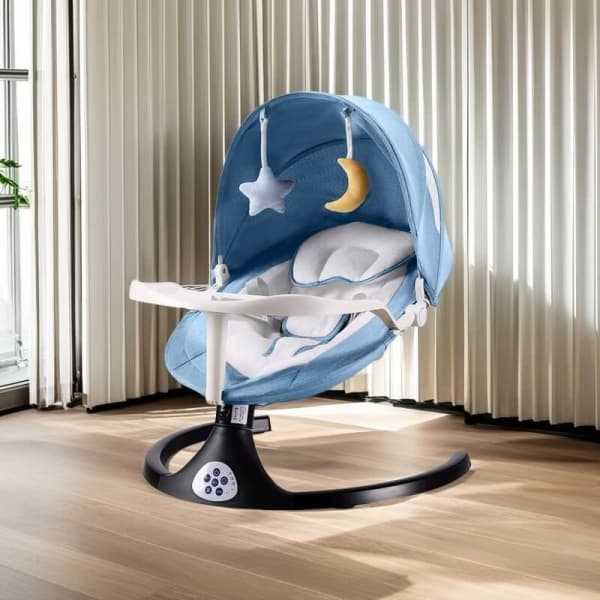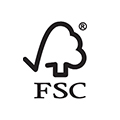Parenting is a beautiful and rewarding journey, filled with countless moments of joy and pride as you watch your little ones grow and develop. However, it can also be challenging to keep up with their boundless energy and curiosity. This is where a learning tower comes in – a versatile and practical solution that allows your child to safely explore the world around them while fostering independence and confidence.
What Is a Learning Tower?
A learning tower, also known as a kitchen helper or a kitchen stool, is a versatile and innovative piece of furniture. This ingenious creation allows little ones to safely participate in various activities that would otherwise be out of their reach, such as helping with cooking, crafting, or even personal grooming tasks.
At its core, a learning tower is a sturdy platform with adjustable heights, providing a secure and elevated standing area for children, typically ranging from 3 to 4 feet in height. This elevation brings them to an appropriate working level, enabling them to engage in tasks alongside their parents or caregivers.
The tower’s design typically incorporates safety features like side rails, non-slip surfaces, and sturdy construction to ensure maximum stability and security. The structure often resembles a small tower or ladder, with steps or platforms leading up to a secure standing area.
Are Learning Towers Safe?
Learning tower manufacturers will give priority to safety factors before designing and producing, and have a series of protective measures. So as long as you look for qualified products made by legitimate manufacturers, learning towers are generally considered safe when used correctly and under adult supervision. High-quality learning towers are meticulously crafted with the following safety features:
Sturdy Construction: Learning towers are typically made from durable materials like wood or metal, ensuring they can withstand the weight and movement of a child without compromising stability.
Non-Slip Surfaces: The standing platform and steps are designed with textured or rubberized surfaces to prevent slips and falls, even when little feet are active.
Wide Base: A Learning Tower should have a wide and stable base to prevent tipping. This ensures that even if a child leans or moves around while standing on the tower, it remains steady and secure.
Side Rails: Robust side rails or walls enclose the standing area, providing a secure barrier to prevent accidental falls or missteps.
Adjustable Heights: Many learning towers offer adjustable height settings, allowing parents to customize the tower’s elevation as their child grows, ensuring a comfortable and safe fit.
Safety Straps or Harnesses: Some models incorporate safety straps or harnesses to secure the child in place, adding an extra layer of protection against potential falls.
Although the design of the learning tower is protective and scientific, children still have very weak tool manipulation abilities and adaptability. Consequently, it’s imperative that a responsible adult supervises children when they’re using the learning tower. Nothing trumps the security of a child.
When to Use the Learning Tower?
Generally, toddler towers are recommended for children who have reached certain physical and cognitive milestones, typically around 18 months to 3 years old. Here are some guidelines for when to use a learning tower:
- Toddler Years (18-36 months): This is an ideal time to introduce a learning tower as children become more curious and independent.
- Preschool Years (3-5 years): Learning towers continue to be beneficial as children develop fine motor skills and engage in more complex activities.
- Kindergarten and Beyond: Even as children grow older, learning towers can still be useful for reaching higher surfaces or participating in family activities.
In addition to considering the exact age, the child’s psychological and physical development should also be considered, because the child’s development may advance or lag, so it still needs to be determined based on the actual situation:
1. Standing and Walking Independently: Children should be able to stand and walk independently before using a Learning Tower. This indicates that they have developed the necessary balance, coordination, and motor skills to stand safely on the elevated platform.
2. Understanding and Following Instructions: Children should be able to understand and follow simple instructions from adults. This is important for teaching them how to use the Learning Tower safely and appropriately, including climbing up and down the steps and staying within the designated area while standing.
3. Interest and Curiosity: Children who show an interest in helping out with household activities or expressing curiosity about what adults are doing in the kitchen may be ready to use a Learning Tower. Their eagerness to participate indicates that they are motivated to engage in hands-on learning experiences.
4. Physical Size and Strength: Children should be physically capable of safely using a Learning Tower. They should be able to climb up and down the steps independently, reach the countertop comfortably while standing in the tower, and maintain their balance without assistance.
What Are the Uses of Learning Towers?
Kitchen Activities:
- Helping with meal preparation, mixing ingredients, or decorating treats
- Learning about cooking techniques, measurements, and kitchen safety
- Developing fine motor skills through tasks like stirring or cutting (with supervision)
Mealtime Preparation:
- Set the table
- Wash fruits and vegetables
- Help spread peanut butter on the bread or pour milk into the glass
Household Chores:
- Assisting with cleaning tasks like wiping surfaces or loading the dishwasher
- Sorting and folding laundry
- Watering plants or tending to indoor gardens
Arts and Crafts:
- Engaging in painting, drawing, or sculpting at a comfortable height
- Accessing materials and supplies more easily
- Encouraging creativity and self-expression
Sensory Exploration:
- Observing and interacting with various textures, scents, and sounds
- Conducting science experiments or nature observations
- Fostering curiosity and hands-on learning
Self-Care and Grooming:
- Reaching the sink for handwashing or brushing teeth
- Practicing dressing and undressing skills
- Promoting independence and self-care routines

Are Learning Towers Worth It?
It’s true that a learning tower isn’t a necessity for your child, but it is a valuable investment that has many benefits for your child’s development and your family.
Learning towers empower children to participate in household activities independently, fostering a sense of autonomy and self-confidence. If you value encouraging your child’s independence and involvement in daily tasks, a Learning Tower may be worth it.
Learning Towers offer opportunities for hands-on learning, sensory exploration, and skill development. Children can develop fine motor skills, hand-eye coordination, creativity, and practical life skills while using a Learning Tower. If you prioritize your child’s holistic development, a Learning Tower may be a valuable tool.
Learning towers provide a safe and secure platform for children to stand at counter height, reducing the risk of accidents and injuries. They also make it easier for children to access kitchen countertops, bathroom sinks, and other elevated surfaces independently. If safety and convenience are important considerations for you, a learning tower can offer peace of mind.
Setting up and Using a Learning Tower
Setting up and using a toddler tower is relatively straightforward, but it’s important to follow safety guidelines and supervise children closely during use. Here’s a step-by-step guide:
Setting Up the Learning Tower
1. Place the tower on a flat, stable surface away from any hazards or obstacles. Avoid placing it near stoves, ovens, or other heat sources.
2. If your learning tower requires assembly, follow the manufacturer’s instructions carefully. Make sure all pieces are securely fastened and the tower is stable before allowing children to use it.
3. If your learning tower has adjustable platforms or steps, adjust them to the appropriate height for your child. Ensure that the platform is at a comfortable level for your child to reach the countertop or sink.
Using the Learning Tower
1. Always supervise children closely when they are using the learning tower.
2. Teach children how to use the kitchen tower safely and responsibly. Show them how to climb up and down the steps carefully, stay within the designated area while standing, and avoid leaning or reaching too far.
3. Encourage children to use the kitchen helper to participate in household activities, such as cooking, baking, cleaning, and self-care tasks.
4. Remind children to use the Learning Tower safely at all times. Emphasize the importance of staying focused, keeping both feet on the platform, and using caution when handling objects or moving around.
Creative Uses and Activities with a Learning Tower
While kitchen helper stools are commonly associated with kitchen tasks, their versatility extends far beyond culinary activities. With a little creativity, these towers can be transformed into engaging spaces for various educational and imaginative pursuits. Here are some innovative ideas to inspire you:
1. Art Station
Set up an art station on the learning tower’s platform, complete with paints, brushes, crayons, and paper. Encourage your child to explore their artistic side and create masterpieces while standing at a comfortable height.
2. Reading Nook
Create a cozy reading nook by placing a cushion or small chair on the tower’s platform and surround it with books and storytelling props. Encourage your child to explore the world of literature from their elevated vantage point.
3. Pretend Play
Transform the kitchen helper into a pretend play area by setting up different scenarios, such as a grocery store, a doctor’s office, or a classroom. Provide props and costumes to fuel your child’s imagination and role-playing skills.
4. Gardening Station
Set up a small indoor gardening station on the learning tower, complete with potting soil, seeds, and child-friendly gardening tools. Teach your child about plant growth and nurturing living things.
Remember, the key to maximizing the potential of a learning tower lies in your creativity and willingness to adapt it to your child’s interests and developmental needs. Encourage their curiosity, foster their independence, and watch them thrive as they engage in these enriching activities.
Learning Tower Brands Recommendation
Clafbebe

Clafbebe is a well-known baby furniture manufacturer in China, known for producing products with friendly prices and high quality. Their learning towers are height-adjustable, equipped with safety railings, and more, and can be customized in color, style, and functionality. Clafbebe learning towers are preferred by many retailers and thousands of families.
Little Partners

Little Partners is a well-known brand that specializes in children’s furniture, including learning towers. Their towers are sturdy, adjustable, and thoughtfully designed with safety features such as safety rails and non-slip steps. Little Partners learning towers are available in various finishes to complement different home décors.
Guidecraft

Guidecraft is another trusted brand that offers a range of educational toys and furniture for children. Their educational towerrs are made from solid wood and feature adjustable platforms to accommodate children of different heights. Guidecraft educational towers are known for their stability and safety, making them a popular choice among parents.
Simplay3

Simplay3 specializes in durable and versatile children’s products designed for both indoor and outdoor use. Their montessori towers feature a sleek and modern design with adjustable heights and sturdy construction.
Sprout

Sprout offers toddler towers that are both functional and stylish, blending seamlessly into modern home décor. Their towers feature a minimalist design with clean lines and smooth edges. Sprout toddler towers are easy to assemble and clean, making them a practical choice for busy families.
Recommended Related Articles:














